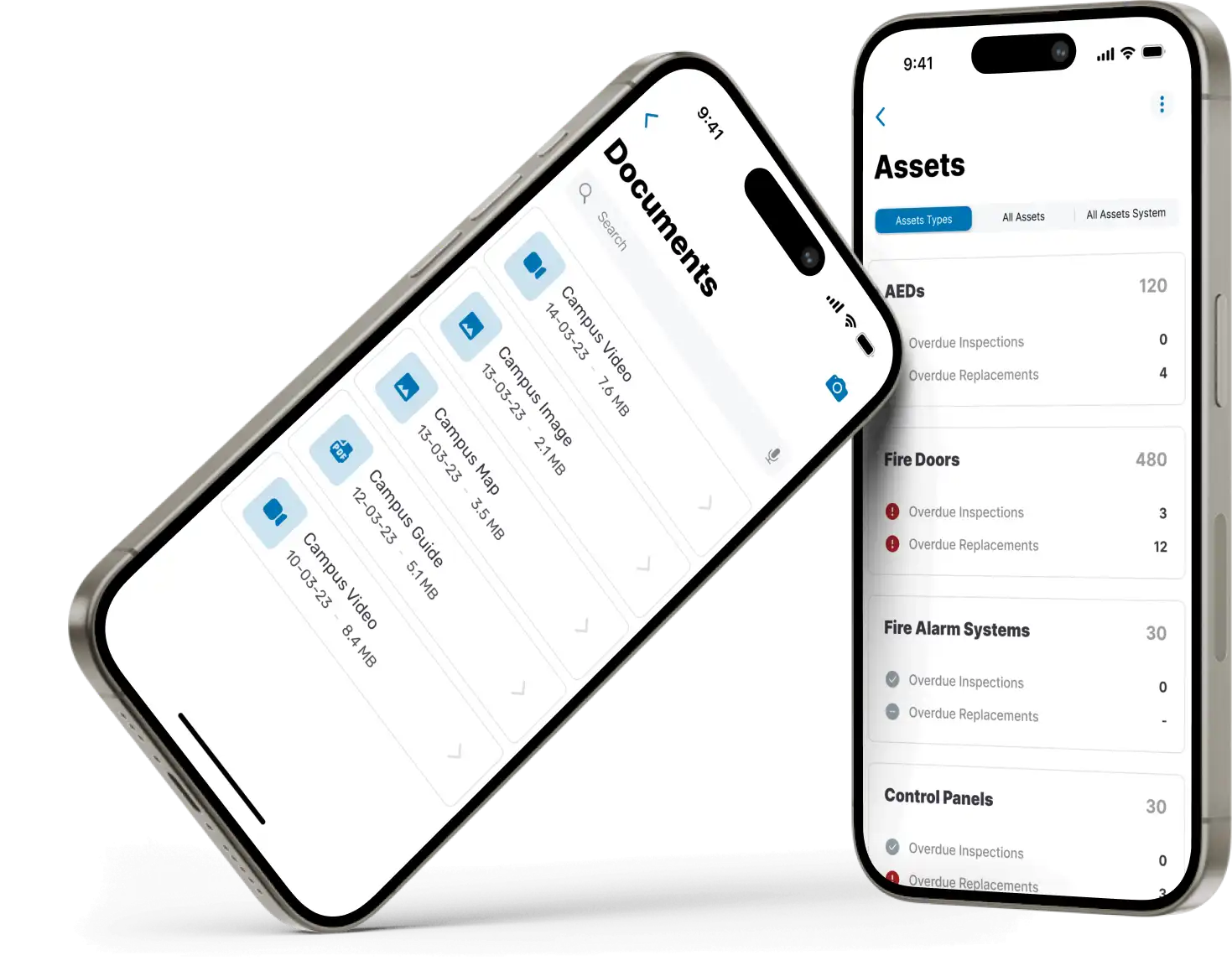Campus Guard Pro
A versatile EH&S platform designed for higher education institutions to assist campus safety professionals in enhancing collaboration, minimizing institutional risk, and fostering a stronger safety culture.

Technologies
ReactNative, NodeJS, Express
Industry
Environmental Health & Safety (EH&S)
Engagement Model
Dedicated Team
Platform
iOS, Android
Team
–
Timeline
–
Overview
The client, a company with decades of experience in providing educational institutions with administrative technology solutions to make educational institutions safe places to learn, work, and live, approached JetRuby Agency with the idea of Environmental Health & Safety (EH&S) software designed specifically for higher education institutions. Initially, it was aimed at enhancing campus safety by improving collaboration among safety professionals, reducing institutional risk, and promoting a robust safety culture. The project result was viewed as a seamless, cross-platform software product on both iOS and Android devices, which had to feature incident reporting and management, risk assessment, training and certification management, audit and inspection scheduling, emergency notifications, and analytics and reporting.
Project Objectives
The project’s objectives included a multifaceted approach to enhancing campus safety. Key goals were to significantly improve the efficiency and effectiveness of campus safety operations, which would involve optimizing the use of resources and ensuring that safety measures are implemented swiftly and accurately. Another crucial objective was to enhance communication and collaboration among safety professionals, thereby fostering a more coordinated and cohesive safety network on campus.
A significant focus was also placed on reducing the number of safety-related incidents. This would be achieved through better reporting mechanisms and more thorough risk assessments, allowing potential issues to be identified and addressed before they escalate. Ensuring compliance with regulatory requirements was another priority, aiming to keep the institution aligned with all relevant laws and standards, thereby avoiding legal complications and enhancing overall safety.
Fostering a proactive safety culture within the institution was also a key goal. This involved creating an environment where safety is a shared responsibility, and everyone, from students to staff, is encouraged to be vigilant and proactive about safety measures.
Clients view the future software product as an essential tool that would comprehensively manage all aspects of campus safety. They anticipated that the software would streamline various workflows, reducing the time and effort required to manage safety protocols and procedures. Moreover, the software was expected to provide real-time insights, enabling data-driven decision-making and timely responses to any safety concerns.
Ultimately, clients believed that the designed software would create a safer environment for everyone on campus, including students, faculty, and staff.
Tech stack
React Native technology was chosen as a primary possible option because it was supposed to ensure that it might be effective and that the final product, through its usage, would be accessible across different platforms. The platform had to ensure that all safety data and communications were protected, thereby maintaining the integrity and confidentiality of sensitive information.
Our work
The development process began with meticulous planning and comprehensive requirements gathering. The development team assigned to the project was relatively small, which necessitated a highly efficient and collaborative approach to meet the project’s demands. Additionally, the timelines for the project were quite strict, requiring meticulous planning and effective time management to ensure all deliverables were completed on schedule.
During the design and discovery phases, no business analyst was involved. As a result, the project’s requirements were discussed between the client’s representative, who held the position of Chief Technology Officer (CTO), and our product lead. This collaboration aimed to ensure that the project’s objectives were clearly understood and adequately defined, despite the absence of a dedicated business analyst. To visually conceptualize the project, wireframes and mockups were developed using Figma, creating detailed and interactive prototypes that facilitated better communication of design ideas and user experiences among stakeholders and team members.
Development adhered to the Agile methodology, utilizing bi-weekly sprints to maintain flexibility and responsiveness to changes. Git was employed for version control to manage code changes effectively. Our rigorous testing phase encompassed unit, integration, end-to-end, and user acceptance testing to ensure the software met all requirements and functioned seamlessly.
Deployment was streamlined through CI/CD pipelines, which automated the process and ensured that code was first deployed to staging environments for thorough testing before being released to production. Maintenance and support were ongoing efforts, involving continuous performance monitoring, user feedback collection, and regular updates and feature enhancements to keep the software current and efficient.
The tech stack was robust and thoughtfully selected. For the front end, we used React Native, leveraging its component-based architecture to create reusable UI components, and React Navigation for seamless navigation. The backend was built with Node.js and Express, providing a scalable and efficient server environment. Data management was handled through a RESTful API, with PostgreSQL chosen as the database for its reliability and ability to handle complex queries, ensuring data integrity and security.
Firebase Authentication was utilized for authentication, offering secure and flexible authentication methods and user role management. Redux was employed for state management, ensuring a consistent data flow and efficient handling of asynchronous actions. AWS S3 was used to store user-uploaded media files, providing high availability and scalability.
Real-time communication features, such as incident alerts and live chat support, were implemented using Socket.IO. Advanced analytics and reporting capabilities were achieved through integration with Tableau or Power BI, allowing for detailed insights and data visualization.
JetRuby’s work principle is centered around alleviating the routine headaches associated with product development. This principle is effectively implemented by our dedicated team of software testers. They play a crucial role in maintaining the quality and functionality of the product by rigorously testing and identifying any issues before the product reaches the client. Their efforts ensure that the development team can focus on creating innovative solutions while maintaining high standards of quality and reliability throughout the development process.
Testing was a critical component of our process, with Jest used for unit testing and Detox for end-to-end testing. CircleCI facilitated continuous integration and deployment, automating the testing, building, and deployment processes to enhance efficiency and reduce the risk of errors.
Overall, our development process was thorough and methodical, ensuring the delivery of a high-quality, reliable, and user-friendly product.
Business outcomes
Implementing Environmental Health & Safety (EH&S) software has enhanced campus safety, compliance, and collaboration among safety professionals by 25%. It has reduced operational costs by 15%, insurance premiums by 10%, and liability by 20% by streamlining incident management and ensuring regulatory adherence. The software also improved efficiency by 30% through better communication and resource allocation, fostered a robust safety culture by encouraging employee engagement, and supported continuous improvement.
Additionally, it aided strategic decision-making with data-driven insights and predictive analytics, while promoting sustainability through environmental monitoring and efficient resource management, reducing environmental impact by 18%.
Overall, EH&S software drove significant business benefits by mitigating risks, lowering costs by 12%, and enhancing safety and efficiency by 28%.
Top-rated B2B software development company with a proven track record
We look forward to discussing your ideas and bringing them to life
By submitting request you agree to our Privacy Policy





